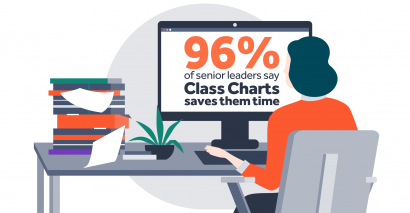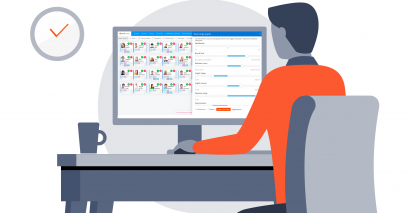In the education world, it's often the big events and decisions that get the most attention. From deciding which textbooks to use to developing long-term academic strategies, the big picture items can consume a lot of time and energy.
But what about the small, day-to-day interactions that happen in the classroom? Could monitoring those interactions make a big difference to your school?
- The answer is yes, and that's where Class Charts comes in.
Class Charts is a powerful tool that helps schools manage their day-to-day operations, including attendance tracking, behaviour management and student performance. One of the unique features of Class Charts is the ability to monitor small interactions between students and teachers, which can have a significant impact on the overall learning environment.
Here are nine reasons why monitoring small interactions could make a big difference to your school.
1. Encourage positive behaviour
When teachers are actively monitoring small interactions in the classroom, they can quickly identify when students are displaying positive behaviours, such as helping others or demonstrating good teamwork. This allows teachers to provide immediate feedback and recognition, which can encourage students to continue to exhibit positive behaviours.
2. Address negative behaviour
In the same way, monitoring small interactions can help teachers identify when students are engaging in negative behaviours, such as teasing or bullying. By addressing these behaviours early on, teachers can prevent them from escalating and potentially causing more significant problems.
3. Foster a positive classroom culture
Small interactions can have a big impact on the overall classroom culture. By monitoring and encouraging positive interactions, teachers can help create a positive learning environment where students feel supported and valued.
4. Build positive relationships
When teachers take the time to observe and acknowledge small interactions between students, it can help build positive relationships between students and teachers. This can lead to increased engagement, better attendance and improved academic performance.
5. Improve student outcomes
When students feel valued and supported, they are more likely to be engaged in the learning process. By creating a positive classroom culture through small interactions, teachers can help improve student outcomes.
6. Identify areas for improvement
By monitoring small interactions in the classroom, teachers can quickly identify areas for improvement, such as the need for more group work or better communication skills. This allows teachers to adjust their teaching strategies and help students improve in areas where they may be struggling.
7. Encourage student participation
Small interactions can be a great way to encourage student participation. By monitoring and acknowledging small interactions, teachers can create a safe and supportive environment where students feel comfortable sharing their ideas and opinions.
8. Build student confidence
By recognising and acknowledging small interactions, teachers can help build student confidence. When students feel that their contributions are valued and important, they’re more likely to participate and engage in the learning process.
9. Create a positive school culture
When small interactions are encouraged and celebrated, it can help create a positive school culture where students, teachers and administrators feel supported and valued.
Monitoring small interactions in the classroom can have a significant impact on the overall learning environment. By using Class Charts to track and monitor these interactions, teachers can help create a positive and supportive classroom culture that encourages student engagement, participation, and success. With its easy-to-use interface and powerful features, Class Charts is the perfect tool to help your school take a more proactive approach to monitoring small interactions and building a positive learning environment.
Want to see Tes Class Charts in action?
Book a demo to see how you can capture the entire learning process as it unfolds.
Not ready for a demo?
Download a copy of our brochure and share with your team to help them see the benefits.





